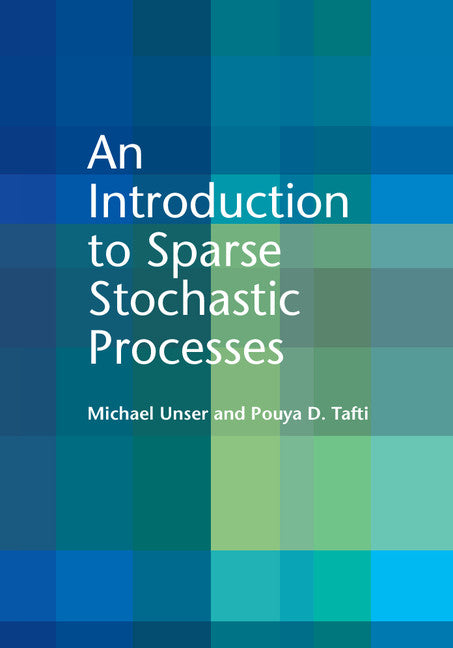Freshly Printed - allow 3 days lead
Couldn't load pickup availability
An Introduction to Sparse Stochastic Processes
A detailed guide to sparsity, providing a description of their transform-domain statistics and applying the models to practical algorithms.
Michael Unser (Author), Pouya D. Tafti (Author)
9781107058545, Cambridge University Press
Hardback, published 21 August 2014
384 pages, 47 b/w illus. 12 tables
25.3 x 17.9 x 2 cm, 0.92 kg
'This is a fascinating book that connects the classical theory of generalised functions (distributions) to the modern sparsity-based view on signal processing, as well as stochastic processes. Some of the early motivations given by I. Gelfand on the importance of generalised functions came from physics and, indeed, signal processing and sampling. However, this is probably the first book that successfully links the more abstract theory with modern signal processing. A great strength of the monograph is that it considers both the continuous and the discrete model. It will be of interest to mathematicians and engineers having appreciations of mathematical and stochastic views of signal processing.' Anders Hansen, University of Cambridge
Providing a novel approach to sparsity, this comprehensive book presents the theory of stochastic processes that are ruled by linear stochastic differential equations, and that admit a parsimonious representation in a matched wavelet-like basis. Two key themes are the statistical property of infinite divisibility, which leads to two distinct types of behaviour - Gaussian and sparse - and the structural link between linear stochastic processes and spline functions, which is exploited to simplify the mathematical analysis. The core of the book is devoted to investigating sparse processes, including a complete description of their transform-domain statistics. The final part develops practical signal-processing algorithms that are based on these models, with special emphasis on biomedical image reconstruction. This is an ideal reference for graduate students and researchers with an interest in signal/image processing, compressed sensing, approximation theory, machine learning, or statistics.
1. Introduction
2. Roadmap to the book
3. Mathematical context and background
4. Continuous-domain innovation models
5. Operators and their inverses
6. Splines and wavelets
7. Sparse stochastic processes
8. Sparse representations
9. Infinite divisibility and transform-domain statistics
10. Recovery of sparse signals
11. Wavelet-domain methods
12. Conclusion
Appendix A. Singular integrals
Appendix B. Positive definiteness
Appendix C. Special functions.
Subject Areas: Image processing [UYT], Signal processing [UYS], Communications engineering / telecommunications [TJK], Electronics engineering [TJF], Probability & statistics [PBT], Biomedical engineering [MQW]


